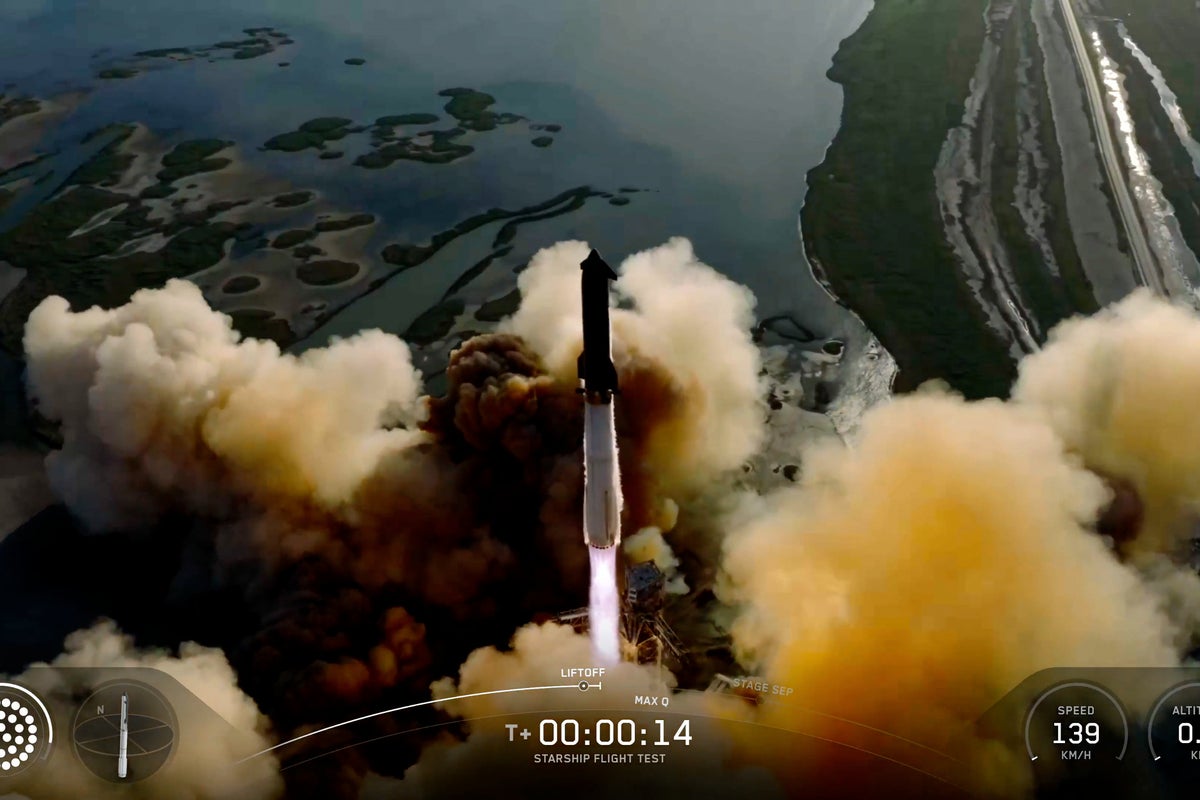SpaceX has successfully launched its 11th test flight of tech billionaire Elon Musk’s giant Starship rocket.
Musk’s aerospace company is striving for the rocket to make it halfway around the world while releasing mock satellites like last time.
Starship — the biggest and most powerful rocket ever built — thundered into the evening sky from the southern tip of Texas on Monday. The booster was programmed to peel away and drop into the Gulf of Mexico, with the spacecraft skimming space before descending into the Indian Ocean. Nothing was being recovered.
It was the 11th test flight for a full-scale Starship, which Musk intends to use to send people to Mars. NASA’s need is more immediate. The space agency cannot land astronauts on the moon by decade’s end without the 403-foot Starship, the reusable vehicle meant to get them from lunar orbit down to the surface and back up.
Instead of remaining inside Launch Control as usual, Musk said that for the first time, he was going outside to watch — “much more visceral.”
The previous test flight in August — a success after a string of explosive failures — followed a similar path with similar goals. More maneuvering was built in this time, especially for the spacecraft. SpaceX planned a series of tests during the spacecraft’s entry over the Indian Ocean as practice for future landings back at the launch site.
Like before, Starship carried up eight mock satellites mimicking SpaceX’s Starlinks. The entire flight was meant to last just over an hour, originating from Starbase near the Mexican border.
SpaceX is modifying its Cape Canaveral launch sites to accommodate Starships, in addition to the much smaller Falcon rockets used to transport astronauts and supplies to the International Space Station for NASA.

